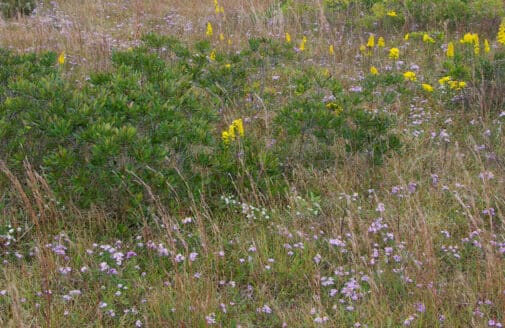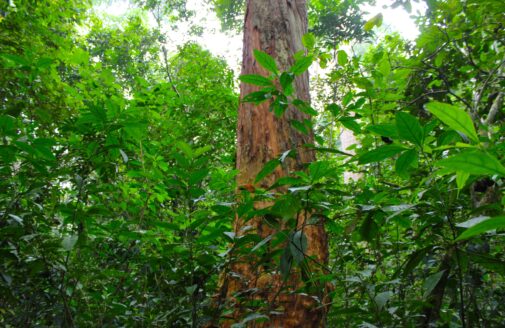Leading ecologists call for strengthening nature-based climate solutions at the federal level
The collaborative group says a solid scientific basis is essential for meaningful climate mitigation

Leading U.S. scientists and policy experts with a broad range of expertise in the fields of climate and ecosystem sciences have outlined key recommendations aimed at bolstering the scientific foundation for implementation of Nature-based Climate Solutions (NbCS) across the nation.
These solutions, which include strategies like protecting carbon-dense forests and wetlands, improving land management, and restoring natural ecosystems, are crucial for enhancing carbon dioxide removal from the atmosphere and reducing greenhouse gas emissions. The stakes are very high—getting NbCS right could mean the difference between achieving long-term global greenhouse gas reduction goals or missing those targets and further destabilizing the climate system.
Although NbCS strategies have potential, on the ground implementation of NbCS has been controversial, often outpacing the scientific understanding of their long-term benefits. The group calls for a more robust, evidence-based approach for NbCS so they can be deployed when and where they are most likely to succeed as climate solutions.
Key recommendations for advancing NbCS
- Open and accessible data and code: Data and products generated by federal agencies or through external partnerships openly and freely accessible. This transparency is vital for driving science forward and developing next-generation approaches for measuring, monitoring, reporting, and verifying (MMRV) the effectiveness of NbCS. Such openness will facilitate collaboration among non-federal scientists, state and local government officials, and resource managers, ensuring that NbCS projects are based on the best available science.
- Establish a hierarchical “network-of-networks”: To accurately quantify the carbon benefits of NbCS, the team advises the creation of a hierarchical system of ecosystem monitoring networks that tracks how carbon moves through ecosystems using soil carbon, forest inventory, and flux measurement data. This system would leverage a range of scientific tools and apply them across various spatial scales, enabling scalable quantification of carbon sequestration and emissions reductions. By incorporating more modern measurement techniques and robust datasets, this approach aims to provide a more comprehensive understanding of NbCS impacts.
- Large-area mapping of land cover, use, disturbances, and management activities: Detailed maps are needed to monitor baseline management regimes and attribute carbon outcomes to specific management and disturbance shifts. Such mapping is essential for extrapolating point-based monitoring to broader assessments at policy-relevant scales. Improved accessibility and resolution of data on NbCS-relevant management practices will support more accurate evaluations of NbCS effectiveness.
A call to action
The group calls on Federal policymakers and program administrators to make implementing a more robust scientific foundation for NbCS an urgent priority.
These recommendations come at a critical time, as recent federal initiatives, such as the Inflation Reduction Act of 2022, and private-sector investments have significantly increased funding for NbCS projects and initiatives to monitor greenhouse gas emissions in forests, croplands, and wetlands. However, to ensure these investments lead to meaningful climate mitigation, a solid scientific basis is essential.
“We’re at an inflection point—we need better science to get this right,” said Dr. William Anderegg, Director of the Wilkes Center for Climate Science and Policy, and School of Biological Sciences, at the University of Utah. “These proposed measures aim to address current gaps in knowledge and data, providing a pathway to more credible and effective NbCS programs.”
The scientists’ call to action underscores the urgency of developing a coordinated approach to MMRV land-sector greenhouse gas exchanges. By prioritizing open data sharing, establishing a hierarchical network-of-networks, and improving large-area mapping, the United States can lead the way in creating robust NbCS programs that deliver tangible benefits for biodiversity, communities, and the climate.
“New federal initiatives offer unprecedented and exciting opportunities to develop more robust NbCS programs for the United States. But to succeed, these initiatives must be grounded in transparency and fully leverage the best available science,” said Dr. Kim Novick, at the O’Neill School of Public and Environmental Affairs, Indiana University.
The collective expertise of the scientific community, coupled with strategic coordination and investment, can pave the way for a future where nature-based solutions play a pivotal role in combating climate change.
“Nature-based Climate Solutions are critical pieces of the puzzle that is our climate future,” said Dr. Jonathan Sanderman, a senior scientist with the Woodwell Climate Research Center. “But to figure out where they fit, we have to know what they’re capable of and be able to measure their success. These recommendations offer a pathway for science-based implementation of NbCS across the U.S.”
Read the full article in the Proceedings of the National Academy of Sciences.







